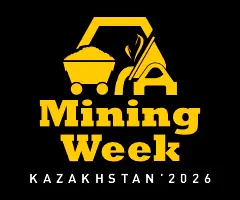Analysis and commercial evaluation of oil reserves using the statistical method
 A.R. Deryaev
A.R. Deryaev
State Concern “Тurkmengaz”, Ashgabat, Turkmenistan
Russian Mining Industry №3 / 2025 p.188-194
Abstract: The research was performed to study the possibility of using the statistical method for oil reserves evaluation based on the case study of the Goturdepe field. The statistical method was applied to analyze the volume of oil produced from wells and to define the degree and the direction of relationships between the variables using correlation tables. A moving average was used to predict the projected values in order to avoid distortions in the analysis, which allowed for more accurate evaluations and a better understanding of the oil field characteristics. A graph that helps to define the dynamics of changes in the flow rate of the new wells in relation to their average production in the field was designed to determine the initial flow rates of the new and reworked wells, as well as to evaluate how the new well flow rates are related to the average production rate of the site and the changes in this relationship over time. Data on the correlation between the flow rates of the new wells at different dates served as a basis for analyzing and forecasting their performance and their contribution to the total production volume. One of the key findings of the study is the confirmation that not only the current production, but also the future production forecasts are important. This helps to optimize the field development and make informed investment decisions. Given the complex geological nature of the region, the use of a statistical method is crucial to ensure the accuracy and reliability of the reserve evaluations. This approach allows taking into account such factors as the differences in the flow rates and geologic characteristics, and helps to make more accurate evaluations and informed decisions in managing oil recovery. The efficiency of this method has been confirmed when evaluating oil reserves of the Goturdepe field.
Keywords: field operation, recoverable reserve, geological structure, cumulative production, extrapolation, development
For citation: Deryaev A.R. Analysis and commercial evaluation of oil reserves using the statistical method. Russian Mining Industry. 2025;(3):188–194. (In Russ.) https://doi.org/10.30686/1609-9192-2025-3-188-194
Article info
Received: 01.03.2025
Revised: 10.04.2025
Accepted: 14.04.2025
Information about the author
Annaguly R. Deryaev – Dr. Sci. (Eng.), Chief Research Associate, The State Concern “Тurkmengaz”, Ashgabat, Turkmenistan; e-mail: This email address is being protected from spambots. You need JavaScript enabled to view it.
References
1. Деряев А.Р. Регулирование реологических свойств утяжеленных тампонажных растворов при цементировании глубоких скважин в условиях аномально высокого пластового давления. Нефтяное хозяйство. 2024;(5);86–90. https://doi.org/10.24887/0028-2448-2024-5-86-90 Deryaev A.R. Regulation of rheological properties of weighted grouting solutions during cementing of deep wells under conditions of abnormally high reservoir pressure. Neftyanoe Khozyaystvo. 2024;(5);86–90. (In Russ.) https://doi.org/10.24887/0028-2448-2024-5-86-90
2. Деряев А.Р. Крепление ствола скважины при пластическом течении солей методом активного сопротивления. Нефтяное хозяйство. 2024;(7):89–93. https://doi.org/10.24887/0028-2448-2024-7-89-93 Deryaev A.R. Borehole fastening during the plastic flow of salts using the active resistant method. Neftyanoe Khozyaistvo. 2024;(7):89–93. (In Russ.) https://doi.org/10.24887/0028-2448-2024-7-89-93
3. Huang Y., Li X., Liu X., Zhai Y., Fang F., Guo W. et al. Review of the productivity evaluation methods for shale gas wells. Journal of Petroleum Exploration and Production Technology. 2024;14:25–39. https://doi.org/10.1007/s13202-023-01698-z
4. Xue L., Liu Y., Xiong Y., Liu Y., Cui X., Lei G. A data-driven shale gas production forecasting method based on the multiobjective random forest regression. Journal of Petroleum Science and Engineering. 2021;196:107801. https://doi.org/10.1016/j.petrol.2020.107801
5. Epelle E.I., Gerogiorgis D.I. A review of technological advances and open challenges for oil and gas drilling systems engineering. AIChE Journal. 2020;66(4):e16842. https://doi.org/10.1002/aic.16842
6. Deryaev A.R. Features of the construction of directed deep wells in Turkmenistan. Italian Italian Journal of Engineering Geology and Environment. 2024;(1):35–47. https://doi.org/10.4408/IJEGE.2024-01.O-03
7. Patzek T.W., Saputra W., Kirati W., Marder M. Generalized extreme value statistics, physical scaling, and forecasts of gas production in the Barnett shale. Energy & Fuels. 2019;33(12):12154–12169. https://doi.org/10.1021/acs.energyfuels.9b01385
8. Имангожина З.А. Современное состояние газовой отрасли Республики Казахстан. Вестник университета «Туран». 2021;(1):201–208. https://doi.org/10.46914/1562-2959-2021-1-1-201-208 Imangozhina Z.A. Current state of the gas industry of the republic of kazakhstan. Bulletin of “Turan” University. 2021;(1):201– 208. (In Russ.) https://doi.org/10.46914/1562-2959-2021-1-1-201-208
9. Lee K., Lim J., Yoon D., Jung H. Prediction of shale-gas production at duvernay formation using deep-learning algorithm. SPE Journal. 2019;24(06):2423–2437. https://doi.org/10.2118/195698-PA
10. Ning Y., Kazemi H., Tahmasebi P. A comparative machine learning study for time series oil production forecasting: ARIMA, LSTM, and Prophet. Computers & Geosciences. 2022;164:105126. https://doi.org/10.1016/j.cageo.2022.105126
11. Утеев Р.Н., Марданов А.С., Юсубалиев Р.А., Ергалиев А.А., Ашимов К.Б., Жиенбаев Б.К. Оценка эффективности горизонтальных скважин. Вестник нефтегазовой отрасли Казахстана. 2022;4(1):28–38. https://doi.org/10.54859/kjogi105526 Uteev R.N., Mardanov A.S., Yussubaliyev R.A., Yergaliyev A.A., Ashimov K.B., Zhienbayev B.K. The evaluation of the efficiency of horizontal wells. Kazakhstan Journal for Oil & Gas Industry. 2022;4(1):28–38. https://doi.org/10.54859/kjogi105526
12. Mahmoud A.A., Elkatatny S., Chen W., Abdulraheem A. Estimation of oil recovery factor for water drive sandy reservoirs through applications of artificial intelligence. Energies. 2019;12(19):3671. https://doi.org/10.3390/en12193671
13. Fu Y., Dehghanpour H., Motealleh S., Lopez C.M., Hawkes R. Evaluating fracture volume loss during flowback and its relationship to choke size: fastback vs. slowback. SPE Production & Operations. 2019;34(03):615–624. https://doi.org/10.2118/195595-PA
14. Cao C., Moussa T., Dehghanpour H. Parent well characterization by comparative analysis of initial and second flowback. Paper presented at the SPE Hydraulic Fracturing Technology Conference and Exhibition, The Woodlands, Texas, USA, January 2023. https://doi.org/10.2118/212368-MS
15. Tamala J.K., Maramag E.I., Simeon K.A., Ignacio J.J. A bibliometric analysis of sustainable oil and gas production research using VOSviewer. Cleaner Engineering and Technology. 2022;7:100437. https://doi.org/10.1016/j.clet.2022.100437
16. Deryaev A. Drilling of directional wells in the fields of Western Turkmenistan. Grassroots Journal of Natural Resources. 2024;7(2):347–369. https://doi.org/10.33002/nr2581.6853.070218
17. Деряев А.Р. Бурение направленной разведочной скважины в мелководье Каспия. Горные науки и технологии. 2024;9(4):341–351. https://doi.org/10.17073/2500-0632-2024-02-217 Deryaev A.R. Directional drilling of an exploratory well in the shallow waters of the Caspian Sea. Mining Science and Technology (Russia). 2024;9(4):341–351. https://doi.org/10.17073/2500-0632-2024-02-217




